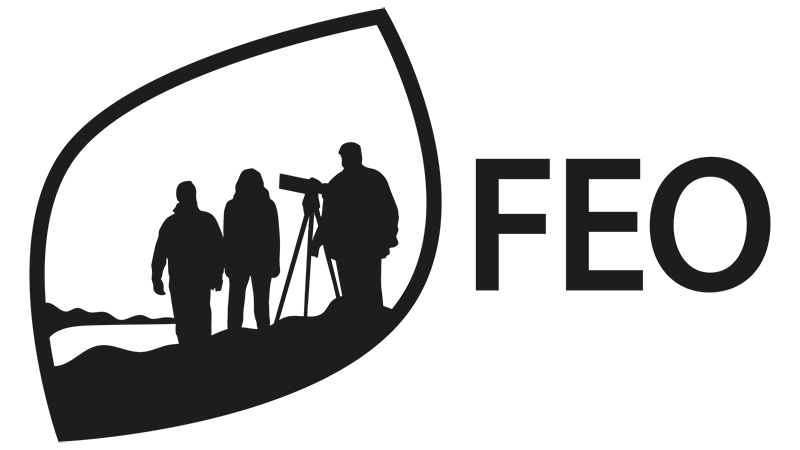Work package 2: Practical applications and testing
Home > Work packages > Work package 2: Practical applications and testing
Work package 2
The FEO work package 2 tests and puts into practise operational models developed at FEO. Already from the early stages of FEO, the goal has been to make new approaches and methods concrete and support the development of FEO starting from practical monitoring needs. Thus, new resources developed through FEO can be utilised in practical work from the beginning.
In the first stages, the work package 2 will concentrate on the following application sectors:
Leader

Pekka Vanhala
pekka.vanhala@syke.fi
+358 295 251 000
Automating Biodiversity.fi
The Biodiversity.fi website offers research-based and up-to-date information on the state and development of Finnish nature. The indicators presented on the website illustrate the state of nature by describing, e.g., the average change of populations of a group of species in a specific habitat in an easily understandable fashion. It has been especially difficult to produce and update the biodiversity and ecosystem service indicators on the website.
As a practical application, FEO aims to automate the production process of the indicators on the Biodiversity.fi website as heavily as possible. The datasets that function as the knowledge base for many indicators are used through the interfaces of different information systems, and their updates will mainly be built on existing remote sensing data and on the efficient and automated use of datasets. The automation will be executed in close co-operation with Finnish environmental research institutes, public authorities, universities and NGOs.
Developing the reporting on the Habitats Directive and the assessment of threatened habitat types
Reporting on the Habitats Directive as well as the assessment of threatened habitat types are two of the largest national assessments of habitat types taking place at regular intervals. FEO will improve the compiling and collective use of the datasets that these assessments are based upon. In addition, FEO will improve the accessibility of the results of the assessment, and therefore also effectiveness by presenting the results in an easy-to-use web service.
The improved management of data on habitat types and the development of indicators describing the state of habitat types also promote the assessment and reporting on endangered species and their conservation status. The goal is that when monitoring the state of biodiversity in the future, the assessments and conclusions can primarily be based on monitoring data and that a significant portion of the monitoring can be executed using remote sensing methods. The development work will answer the questions on, e.g., at what rate the occurrences of a certain habitat type are destroyed due to construction or other land use, or at what rate open habitat types such as many seminatural grasslands and grazed woodlands or sands, sand banks and beaches lose their surface area due to overgrowth.
Carbon-neutral land use and habitat management
The deterioration of ecosystems and biodiversity decline are intertwined with climate change. Fixing these problems requires comprehensive and up-to-date information on the state of nature. This application will produce information needed when planning and implementing the protection of biodiversity and carbon-neutral society. The application examines the regional distribution and the sources of society’s greenhouse gas emissions using emission models. Current and model-based future emissions will be combined with biodiversity and ecosystem models. In this way, we can examine the effects of climate change, land use and environmental restoration on the state and quality of areas that are valuable to biodiversity as well as on the biogeochemical cycle and the ecological state of habitats. The system that is to be developed will make it possible to coordinate biodiversity and climate targets in land use planning as well as when examining the effects of different measures and scenarios which support decision-making.
Producing data on nature needed by municipalities and regions
The accessibility of sufficient and diverse data on nature is essential when protecting biodiversity. A great deal of data on nature is collected on municipal and regional levels but the methods are not consistent, and it varies widely how and whether the data are published and how easily available they are. Municipalities and regions also have a need to acquire up-to-date data on nature as a basis for land use planning and urban planning. This application compiles information on nature from municipalities and develops instructions and methods for producing and recording information on nature in co-operation with representatives of municipalities as well as with already existing municipal sector networks and actors. This will make utilisation of existing information and production of new information more effective.
Development and implementation of ecosystem accounting
Ecosystem accounting provides quantitative information on how much the changes in ecosystems and the services they produce affect our national economy and well-being.
Ecosystem accounting requires annual and regionally comprehensive information on the structure of ecosystem services and their changes. Currently this data is insufficient. The aim of the application is to improve the usability of the source data sets of ecosystem accounting and correcting deficiencies in the datasets by making use of the newest machine learning and remote sensing methods. This will assist authorities collecting statistics in Finland and the EU to develop reproducible, documented and high-quality ecosystem accounting processes.
